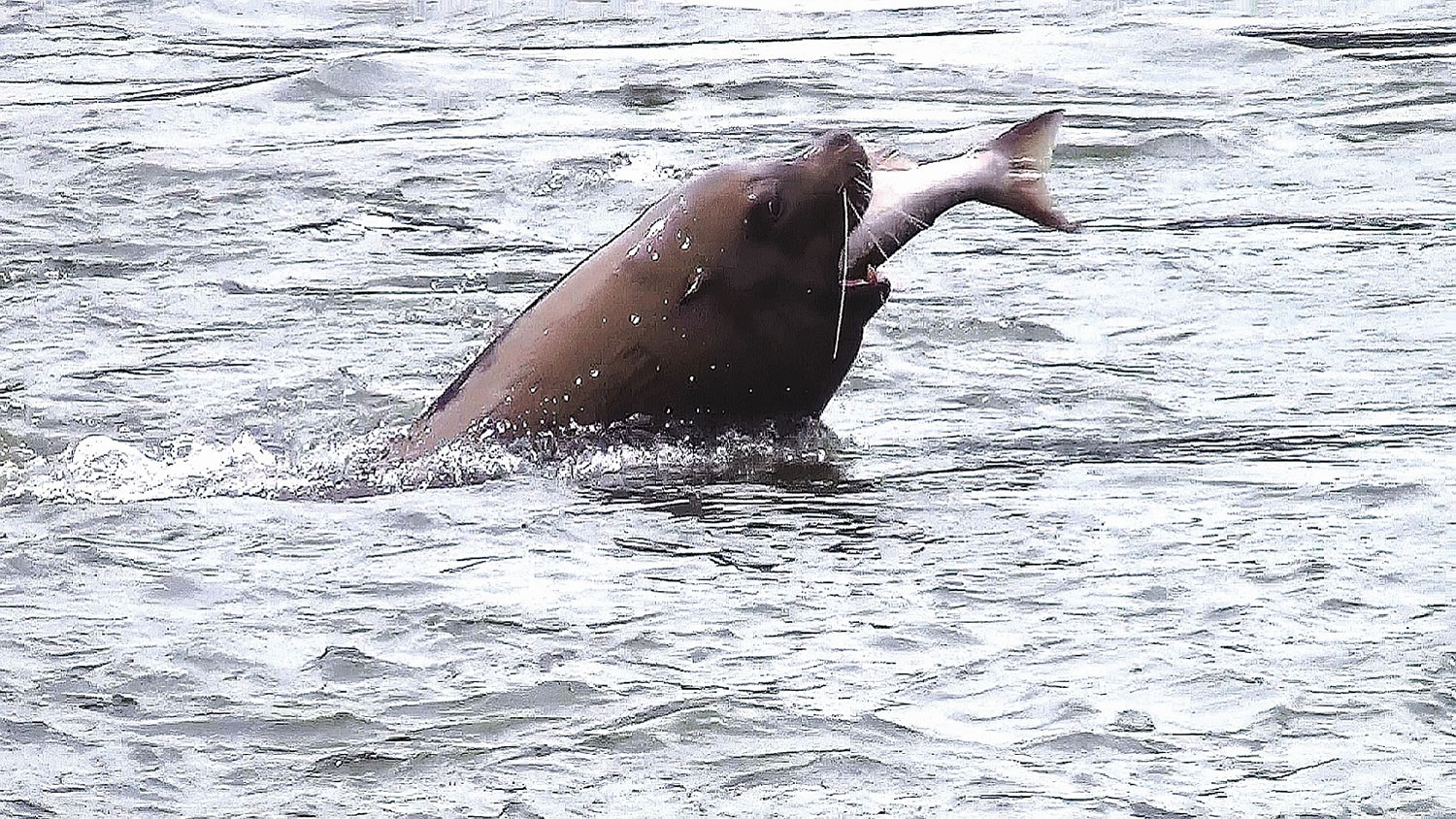Spring chinook nosing into the Columbia River will have to make it past more than a phalanx of baited hooks, lures and nets to make it to the tributaries. The fish will also have to run a gauntlet of hungry seals and sea lions that are increasingly drawn there to feast on the bounty.
An aerial survey by the Washington Department of Fish and Wildlife earlier this month showed more than 6,000 harbor seals, 1,500 California sea lions and 100 Steller sea lions between the river’s mouth and Portland.
They are drawn into the river this time of year to take advantage of a large smelt run. But the pinnipeds will switch to spring chinook in the coming months.
“We have more sea lions than ever in the Columbia, and they are there when endangered salmon and steelhead are there, and the smelt they are eating are endangered as well,” said Steve Jefferies of the Washington Department of Fish and Wildlife at Olympia.
Predation of spring and summer chinook is a thorn in the side of salmon managers who have few resources to deal with the animals that are sheltered by the Marine Mammal Protection Act.
A study last year indicated as much as 40 percent of the spring and summer chinook run that enters the Columbia River goes missing. Although scientists don’t have direct evidence that sea lions are primarily to blame, the salmon losses have risen at the same time the number of pinnipeds has increased in the lower Columbia.
Researchers are working to establish what is happening to the salmon that enter the river and disappear before being recorded passing dams or being caught in sport or commercial fisheries.
“It will be good to get some research to link what the predation agent is,” said Doug Hatch of the Columbia River Inter-Tribal Fish Commission at Portland. “But we don’t really care, the 40 percent loss is just too much loss.”
State fisheries managers have applied for and gotten permits to lethally remove some of the sea lions. But doing so has been controversial, time consuming and fraught with litigation. Over the past six years, only about 50 animals have been killed.
A bill before Congress sponsored by Rep. Jaime Herrera Beutler, R-Wash., and Rep. Kurt Schrader, D-Ore., would amend existing law and make it easier for states and treaty Indian tribes to kill problem sea lions.
Under the legislation, Washington, Oregon and Idaho, along with the Nez Perce, Yakama, Warm Springs and Umatilla tribes, would each be able to secure a lethal take permit and remove as many as 10 animals each and a maximum of 92 among all the agencies.
Hatch said when the Marine Mammal Act was written, nobody envisioned it would be as successful as it has been. He said there were only about 30,000 sea lions at the time. Now, estimates put the population at 350,000.
“The act protects them at all costs and doesn’t really predict a point where there is going to be a time where we start managing (the population), and that is where we are at now,” Hatch said.
“We have management going on on everything else — on all the other Hs. Harvest is heavily managed and so is hydro. Habitat improvements are going on and hatchery management but there is not much with predation management.”



